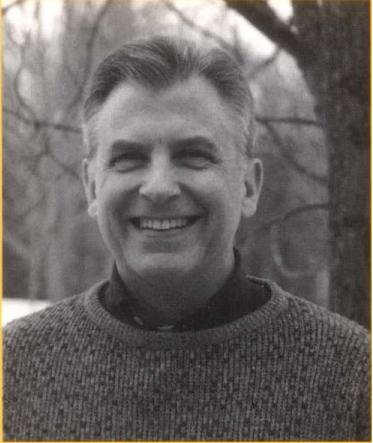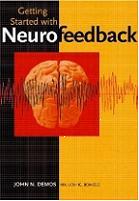
John Demos

|
John Demos
|
|
EEG Foundations Course #72): Electrode Placement- where, why & how.
Foundation course- one hour
Participants will learn the basics of electrode placement and the International 10-20 system.
The rationale behind choosing specific sensor locations will be explored and demonstrated.
36 hours of training will provide you with a certificate, 34 continuing education credits (APA or ASWB) and it is the first step towards EEG-biofeedback certification by the Biofeedback Certification Institute of America (BCIA)www.bcia.org. Our program is designed for health care professionals who are state certified or licensed in their chosen field including: medical and naturopathic doctors as well as psychologists, social workers, counselors, physical and/or occupational therapists, registered nurses, chiropractors, credentialed special education teachers and school
counselors working in a school environment.
Others who may not be meet the above qualifications may also
benefit from this training include graduate students as well as the
staff of a neurofeedback practice: specific questions about
certification should be directed to BCIA.
Workshop #84): Neurofeedback meets neurology
Symptoms can often be traced to specific regions of the brain. Neurotherapy protcols can be driven in part by an undertanding of neurology. This power point presentation will provide a rationale for therapy.
Plenary #82): Neurofeedback meets wholistic counseling
Neurofeedback is an effective tool for enhancing brain metabolism. However, many prospective clients present with physiological symptoms, family issues and poor life style habits. Effective screening at the intial intake explores life-style habits, family structure as well as physiological problems.
Details:
EEG Foundations Course #72): Electrode Placement- where, why & how.
Pre-Conference #86): Getting Started with Neurofeedback; 36 hours of BCIA required training leading to EEG certfication
Neurofeedback is a comprehensive system that promotes change at the cellular level of the brain and empowers the client to use his or her mind as a tool for healing. Trainees often report relief
from symptoms related to depression, anxiety, PTSD, addictions and unresolved emotional issues. Neurofeedback training is also known to promote a state of focused relaxation that has benefited
those with attention deficit disorder (ADHD), learning disorders,OCD, and traumatic brain injury. Other disorders that have
responded well to neurotherapy include epilepsy, headaches, andchronic fatigue, etc.
A growing number of health care providers have madeneurotherapy their primary treatment modality whereas others have made it a part of a larger clinical practice.
How can I prepare?
Read Part I of the book: Getting Started with Neurofeedback. It will lay the groundwork for the information you will soon be processing and later using in a clinical setting. The practice of
neurofeedback has numerous technical terms-a few short hours of reading will help you to absorb what is to come. (Please bring your book to the workshop)
COURSE PURPOSE (Workshop summary)
John N Demos, author of Getting Started with Neurofeedback, is the presenter. His 4-day BCIA (EEG) accredited workshop is the first step in the certification process. It has been designed to meet the 36-hours of required learning outlined by BCIA. Thisworkshop covers the foundation and rationale for neurofeedback.
You will learn the history of neurotherapy and how it has evolved into present day clinical practice as well as the basics ofassessment, treatment planning, and training with neurofeedback equipment. Attendees will be given an understanding of the electrical activity of the brain and how it influences cognition and
behavior. Your learning experience will be enhanced by video presentations, illustrations as well as hands-on experience. Participants will be introduced to two different types of neurofeedback systems.
Please bring Getting Started with Neurofeedback to the workshop.
Workshop #84): Neurofeedback meets neurology
Neurotherapy protocols may be chosen by paying attention to the presenting symptoms and matching those symptoms with neurologically specific areas of the brain. Key structures of the brain include the lobes of the prefrontal cortex. If the executive region of the brain is not functioning properly, likely the functioning of other lobes will be compromised. Identifying frontal lobe and prefrontal lobe abnormalities often guides neurotherapy protocols. However, neurotherapy in the frontal lobes is difficult and in some cases impossible. Fortunately therapy options are available. Other lobes also contribute to various symptoms. The power point presentation will review functions associated with the temporal, parietal, occipital lobes as well as the cingulate gyrus, cerebellum and the sensorimotor cotex. Each structure will be reviewed and likely therapy interventions will be discussed. Workshop attendees will be introduced to websites that can serve as guides as well as publications that can be used as the basis of clinical interviews in the search for the symptom based neurologically specific neurotherapy protocols. Potentially beneficial protocols include: how to improve handwriting in children with a two channel model; enhancing eye contact with children who are diagnosed with aspergerís disorder; improving balance with clients who are unsteady or unsure on their feet; building social awareness and executive functioning and judgment by training in the frontal lobes. All protocols require an understanding of how to identify EEG abnormalities by performing mini-assessments or QEEG. Participants need to have a general understanding of how neurofeedback works and the international 10-20 system of sensor location.
Plenary #82): Neurofeedback meets wholistic counseling
Clients seeking wellness come to neurofeedback expecting to be helped. Some expect to be "fixed" by neurofeedback as if it were a silver bullet. Biofeedback is a self-regulation skill that requires self-regulation on the part of the individual and the family. We are living in the age of the dys-regulated family and diabesity. We ought to dispell the notion that neurotherapy will cure all ills while drawing attention to the real-time needs of clients to take responsibility for themselves and their family obligations. All too many treatment failures can be traced back to the initial screening which gave the client hope but did not help them to understand that "neurofeedback is orchestrated by the therapist and played out by the client." Physiological issues that can sabotage neurotherapy include hormonal imbalances, yeast overgrowth, shallow breathing practices, and food allergy and/or intolerance. Psychological issues that can sabotage neurotherapy include Axis II issues and undiagnosed PTSD, alcoholism, bipolar disorder and disociative disorders. Family issues include lack of structure, religious or ethical instruction, dysregulation. Life-style issues include lack of exercise, poor nutrition and sleeping habits. Understanding and addressing the above issues will improve outcomes and provide dyregulated clients with practical help that will promote real change in their life. Each of the above topics will be accompanied by case studies that illustrate the power of the wholistic approach and life-style counseling. Indeed neurotherapy providers need to be aware of more than brain metabolism and beta/SMR protocols. (Anything not covered will be expanded upon during my workshop)
Contact Info:
John Demos
PO Box 325
Westminster, Vermont 05158
phone: